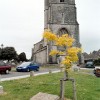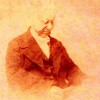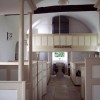Straddling the main Dorchester to Wareham road, Broadmayne, it has to be said, is not one of the prettiest of Dorset villages. In the 18th century there were kilns here producing bricks made from local clay so it is surprising that only one brick-built cottage of the period, dated 1732, has survived here and you will not find many other examples from this period in the county. Don’t be fooled by the appearance of the 13th century Manor house; what appear to be bricks are simply tiles added in the 19th century for protection. Modern housing detracts from the few surviving older cottages.
Dedicated to St. Martin the parish church is at the north-west end of the village, visible from and alongside the main road. The walls are faced, roughly squared and coursed rubble with ashlar dressings, all of Portland stone; the roofs are tiled, with stone-slated verges. Depending on your point of view the church benefited or suffered from extensive restoration during the Victorian era. The architect Thomas Hardy, later novelist and poet, while articled to the Dorchester firm of J. Hicks, drew up the plans for the work in 1865-66 and his drawings are on display in the vestry.
St. Martin’s is unusual in that it has a south tower with the lower stage ground floor doubling as a porch where there is a piscina and stoup and on the outside wall, east of the door, is a scratch dial. The positioning of the tower was probably dictated by the land, which slopes away quite sharply to the west of the church. The tower is of the 13th century but the upper stage was rebuilt late in the 15th century or early 16th century.
The entrance is through the porch into the 14th century nave. The window by the font and the large west window over the west door are 15th century in the Perpendicular style. The font of Portland stone is of the 15th century and has been restored. There are stoups outside both the south and west doorways. The north aisle, north arcade and vestry were added during the 19th century restoration and the entrance to the vestry from the north aisle is through the original 14th century chancel arch.
Hardy’s plans for the restoration work clearly show that there were galleries on the north and west sides of the nave. The windows in the north aisle are all of similar design and of the 19th century with the exception of the most easterly one which, though of the same design, is 14th century.
Dating from the 13th century the chancel is the oldest part of the church with original windows. From the outside it is possible to see the priest’s door in the south wall – now blocked up. The chancel arch is Victorian; the original 14th century arch, as we have seen, is still employed in the church.
In the 12th and 13th centuries this place was known as Maine Martel and the Martel family were the Lords of the Manor. In the north aisle is a 13th century coffin lid that was found in the churchyard during work on a 1980’s road widening scheme. The floral cross carved on the lid can still be made out. Other monuments within the church include ones to Eliza, wife of John Gardiner 1834; Laura Hussey 1845; several to members of the Urquhart family during the 19th century. In the churchyard William Gatch and his wife 1691 and 1698; John Sherren and his son Henry and Thomasine, Henry’s wife, 1714, 1752 and 1761; Jeremiah Pount 1692; John Tibbes 1712; Phillip Tibbes 1703; Phillip Bard 1700; and Jeffrey Samway 1737.



